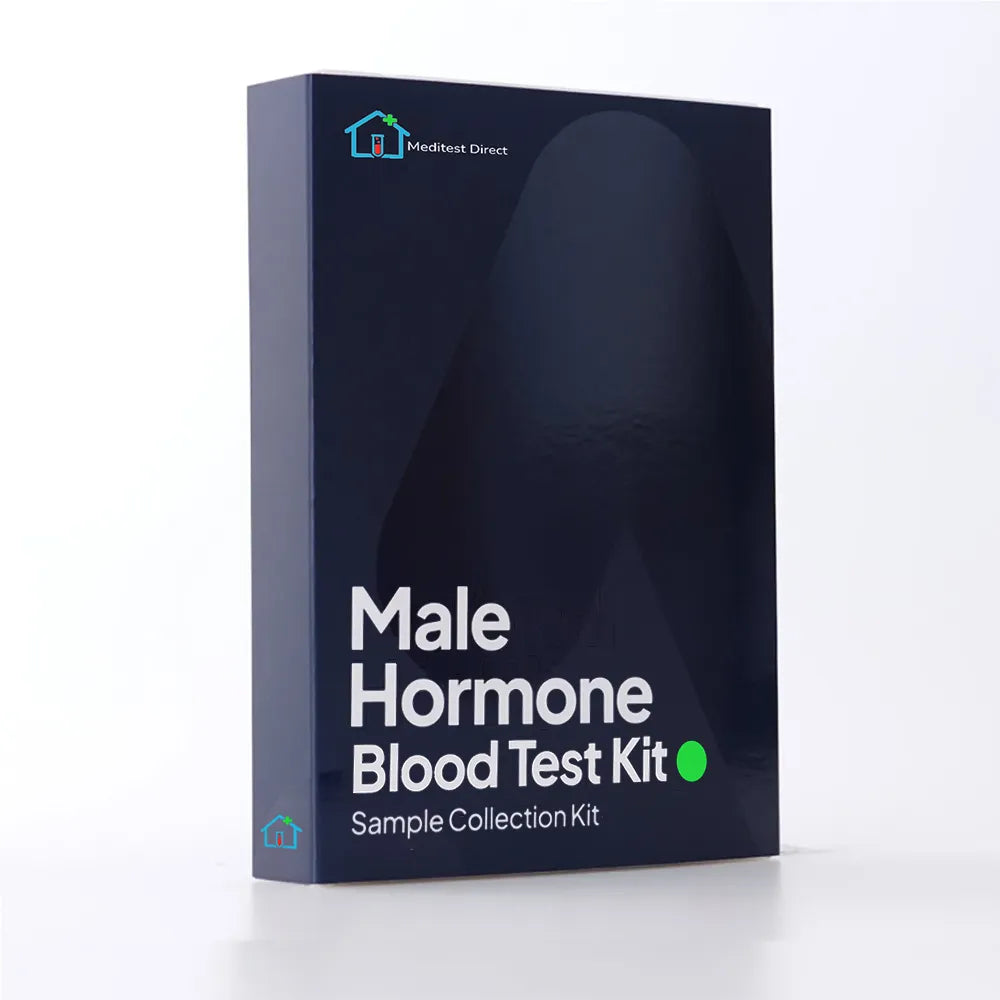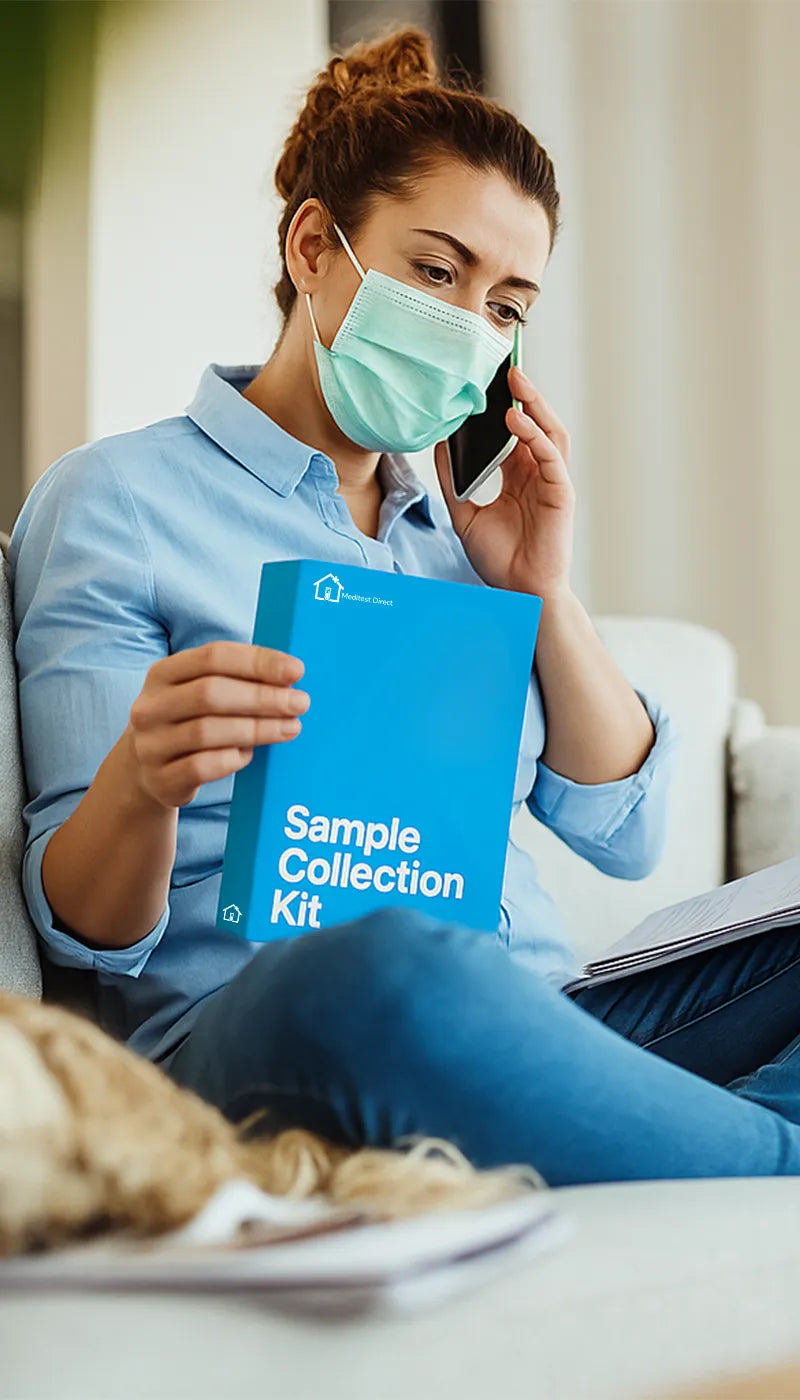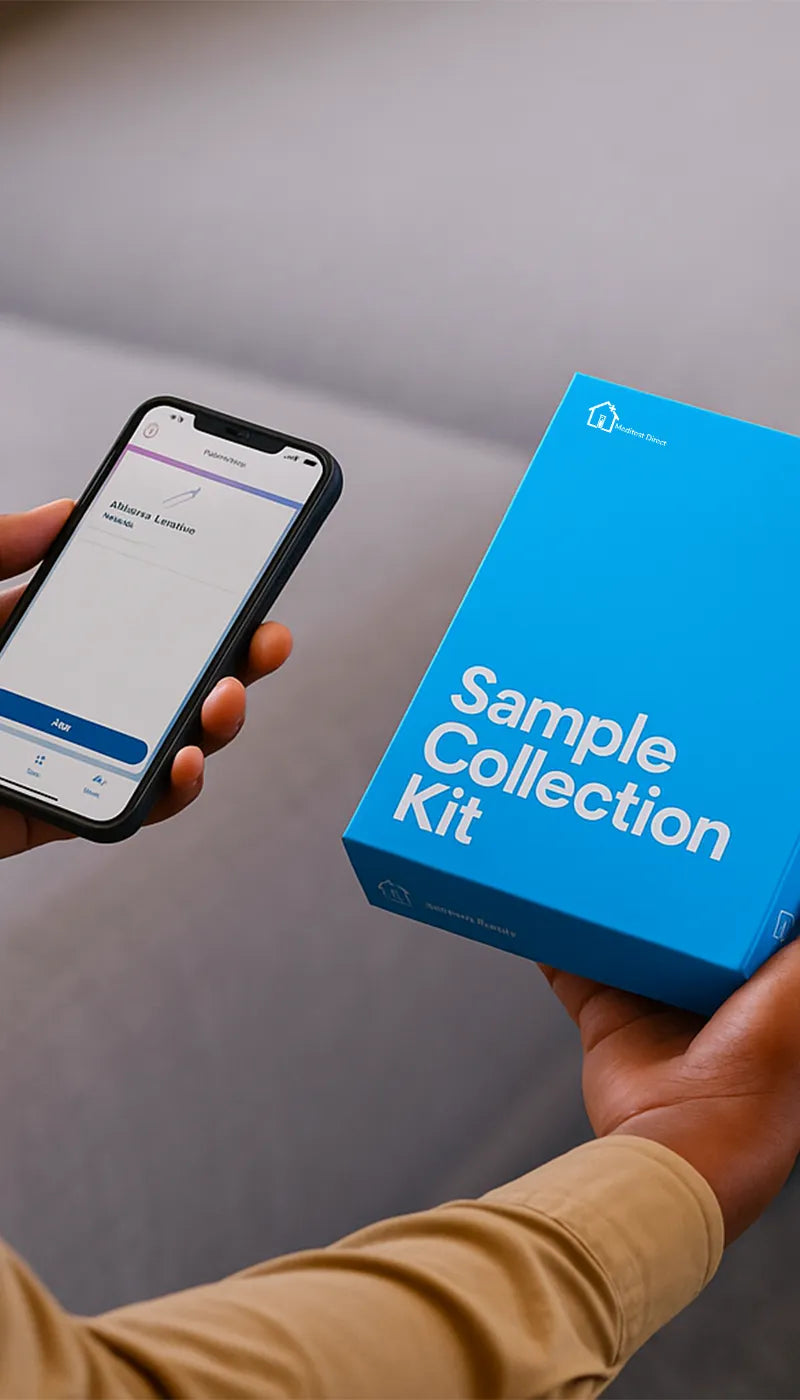Explore Our Most Popular Tests.
What’s in the box
- Sperm collection container
- Detailed instructions for sample collection
- Prepaid return envelope for laboratory analysis
- Discreet packaging for privacy

This product is a home blood test kit that measures key male hormones including testosterone, luteinising hormone (LH), follicle-stimulating hormone (FSH), and prolactin. These hormones play a central role in regulating energy, libido, fertility, and overall male health. Imbalances can affect mood, sexual function, and physical performance.
Provides a broader overview of male hormone balance beyond just testosterone
Helpful for investigating symptoms such as fatigue, reduced libido, or fertility concerns
Supports discussions with healthcare professionals regarding hormonal health
Simple home collection with UKAS-accredited laboratory analysis
Hormone levels can be influenced by age, health conditions, and lifestyle factors
Results should be interpreted alongside medical history and clinical advice
This test is for informational purposes and not a substitute for professional medical diagnosis
All samples are processed by UKAS-accredited laboratories
At MeditestDirect, we offer a wide range of trusted home testing kits from general health and wellness to more specific medical checks. Whether you're monitoring your body or taking control of your health journey, we've got a test that fits. Your results are processed securely and kept completely confidential, giving you peace of mind every step of the way.




With MeditestDirect, you're in control. Choose from a full range of easy-to-use home test kits, all designed to give you accurate results without the wait. From everyday check-ups to targeted health concerns, every test comes with full privacy and secure result delivery—because your health information should stay yours.

Explore Our Most Popular Tests.
DHEAS is the sulphated form of DHEA, a hormone which is produced by the adrenal glands and is responsible for male characteristics in both men and women. DHEAS gradually declines from the age of 30 onwards.
Follicle Stimulating Hormone (FSH) is produced in the pituitary gland and is important for women in the production of eggs by the ovaries and for men in the production of sperm. In the first half of the menstrual cycle in women, FSH stimulates the enlargement of follicles within the ovaries. Each of these follicles will help to increase oestradiol levels. One follicle will become dominant and will be released by the ovary (ovulation), after which follicle stimulating hormone levels drop during the second half of the menstrual cycle. In men, FSH acts on the seminiferous tubules of the testicles where they stimulate immature sperm cells to develop into mature sperm.
Luteinising Hormone (LH) is produced by the pituitary gland and is important for male and female fertility. In women it governs the menstrual cycle, peaking before ovulation. In men it stimulates the production of testosterone.
Oestradiol is the strongest of the three oestrogens. It's labelled a female hormone but it's made in both the ovaries and testes. It's responsible for the growth of breast tissue, the female reproductive system, and male sexual function. In pre-menopausal women, oestradiol levels vary throughout the monthly cycle, peaking just before ovulation. Levels are lowest after menopause when the ovaries stop producing eggs. Low oestradiol levels in women can cause many symptoms associated with the menopause, including hot flushes, night sweats, and changes in mood. It can also increase the risk of osteoporosis (a condition where the bones become less dense). In men, oestradiol levels tend to increase slightly with age as testosterone levels decline. Too much oestradiol in men can contribute to fertility problems, gynecomastia (enlarged breast tissue), and erectile dysfunction.
Testosterone is a hormone that causes male characteristics. For men, it helps to regulate sex drive and has a role in controlling bone mass, fat distribution, muscle mass, strength and the production of red blood cells and sperm. Testosterone is produced in the testicles of men and, in much smaller amounts, in the ovaries of women. Testosterone levels in men naturally decline after the age of 30, although lower than normal levels can occur at any age and can cause low libido, erectile dysfunction, difficulty in gaining and maintaining muscle mass and lack of energy. Although women have much lower amounts of testosterone than men, it is important for much the same reasons, playing a role in libido, the distribution of muscle and fat and the formation of red blood cells. All laboratories will slightly differ in the reference ranges they apply because they are based on the population they are testing. The normal range is set so that 95% of men will fall into it. For greater consistency, we use the guidance from the British Society for Sexual Medicine (BSSM) which advises that low testosterone can be diagnosed when testosterone is consistently below the reference range, and that levels below 12 nmol/L could also be considered low, especially in men who also report symptoms of low testosterone or who have low levels of free testosterone.
Most testosterone circulating in the blood is bound to proteins, in particular SHBG and albumin; only 2-3 % of testosterone is free and available to cells. This test uses an algorithm to calculate the level of free or unbound testosterone in relation to total testosterone, SHBG and albumin.
The free androgen index (FAI) is a calculation used to determine the amount of testosterone which is free (unbound) in the bloodstream. Most testosterone is bound to proteins sex hormone binding globulin and albumin and is not available to interact with the body's cells. The FAI is a calculation based on the ratio of testosterone and SHBG and is a measure of the amount of testosterone that is available to act on the body's tissues. The free androgen index is used in women to assess the likelihood of polycystic ovarian syndrome. In men, free testosterone gives a better indication of testosterone status.
Prolactin is a hormone which is produced in the pituitary gland and plays a role in reproductive health. Its primary purpose is to stimulate milk production after childbirth, and in pregnant and breastfeeding women prolactin levels can soar.
Albumin is a protein which is made mainly in the liver. It helps to exert the osmotic pressure which holds water within the blood. It also helps carry nutrients and medications and other substances through the blood and is important for tissue growth and healing. Albumin also carries hormones around the body, therefore measuring the amount of albumin in the blood can help us calculate how much hormone is available to your tissues.
SHBG (sex hormone binding globulin) is a protein which transports the sex hormones (testosterone, oestrogen and dihydrotestosterone (DHT)) in the blood.Hormones which are bound to SHBG are inactive which means that they are unavailable to your cells. Measuring the level of SHBG in your blood gives important information about your levels of free or unbound hormones which are biologically active and available for use.